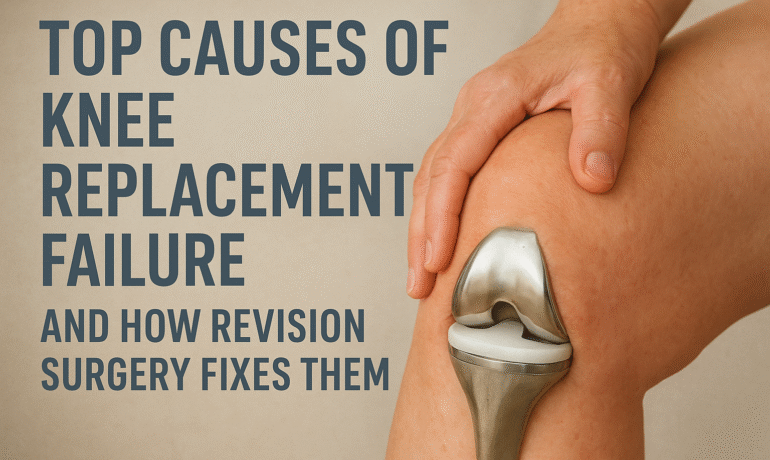Knee replacement surgery offers long-term relief for chronic joint pain and stiffness. However, in some cases, the implant may not perform as expected. Understanding the causes of knee replacement failure and how revision knee surgery helps restore function can ensure a faster, safer recovery.
1. Infection After Knee Replacement
Post-surgical infection is one of the primary reasons for knee implant failure. Bacteria can enter the joint and damage tissues, causing pain, swelling, and reduced movement.
How Revision Surgery Helps:
• Removes the infected prosthesis
• Cleans the affected area
• Replaces it with a new, sterile implant
This procedure restores stability and prevents further joint damage.
2. Implant Loosening or Wear Over Time
Over the years, friction or poor bone bonding can lead to loosening of the knee implant. This often results in pain and difficulty walking.
How Revision Surgery Fixes It:
• Removes worn-out implant parts
• Adds bone grafts if necessary
• Repositions a new, secure implant for better alignment
This restores proper joint function and comfort.
3. Instability in the Knee Joint
Improper ligament balance or soft tissue weakness may cause knee instability after surgery. This can make walking or standing difficult.
Revision Solution:
• Tightens or rebalances ligaments
• Installs a more stable implant design
These steps improve knee alignment and motion control.
4. Improper Implant Positioning
When the implant is not positioned correctly during the initial surgery, it can cause pain, uneven wear, and stiffness.
How Revision Surgery Corrects It:
• Realigns the implant precisely
• Adjusts the bone cuts for better fitting
• Enhances long-term movement and comfort
Proper placement ensures smoother, natural knee motion.
5. Fractures Around the Implant
Falls or trauma can lead to bone fractures near the implant, resulting in painful knee failure.
Revision Fix:
• Repairs the fracture using plates or bone grafts
• Replaces damaged components
• Restores the structural integrity of the joint
This helps patients regain strength and confidence while walking.
How Revision Knee Replacement Surgery Works
Revision knee replacement involves removing the failed prosthesis and replacing it with a new, custom-fitted implant.
Steps Involved:
• Pre-surgical evaluation and scans
• Removal of damaged implant
• Bone reconstruction if needed
• Insertion of new implant
• Physical therapy for recovery
This procedure is more complex than the first surgery but offers lasting relief when done by an experienced orthopedic surgeon.
Preventing Knee Replacement Failure
• Follow post-surgery care instructions
• Maintain a healthy weight
• Do regular physiotherapy
• Avoid high-impact sports
• Schedule periodic follow-ups
Consistent care reduces the chances of needing revision surgery.
Conclusion
Knee replacement failure can occur due to infection, loosening, or implant issues. Identifying the cause early ensures effective treatment and faster recovery.
Revision knee replacement surgery restores function, stability, and comfort when performed by a skilled orthopedic specialist.
Consult our Dr. Vinay Orthocare for expert diagnosis and advanced treatment options.

